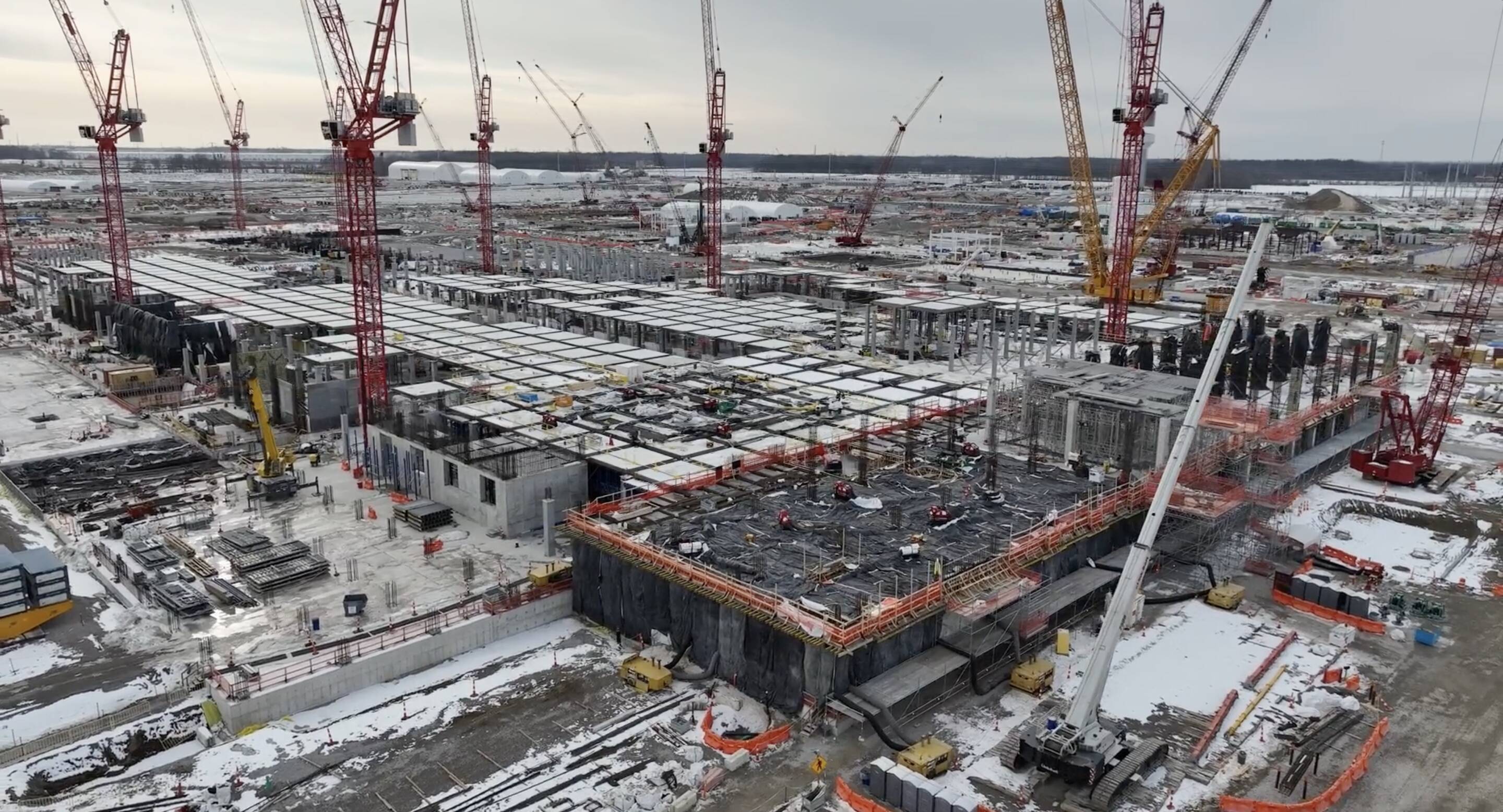Intel Slows Its Roll On $28B Ohio Fab Expansion, Pushing Production To 2030s

Intel's floundering foundry business hit another speed bump on Friday after executives delayed the completion of its $28 billion Ohio factory build-out until at least 2030.
"As we continue to invest across our US sites, it's important that we align the start of production of our fabs with the needs of our business and broader market demand," Intel's Chief Global Operations Officer and foundry lead, Naga Chandrasekaran, wrote in an open letter to employees Friday. "With that in mind, we are adjusting the timeline for our two Ohio fabs."
Intel now expects the first of the two fabs to start production between 2030 and 2031 with the second following roughly a year later. This marks the second significant delay to Intel's "Silicon Heartland," since it was announced in early 2022. The fabs were originally slated to enter production in 2025, however, those plans were closely tied to state and federal subsidies and tax incentives under the US CHIPS and Science Act.
By early last year, those plans were abandoned and the work on the site pushed back until late 2026. Since then Intel has faced significant financial headwinds as its foundry division has racked up billions of dollars in losses quarter after quarter, and the x86 giant has continued to outsource more chips to TSMC. President Trump's cutbacks to the US government may also have dire effects on public funding from the CHIPS Act, which Intel relies on.
In an attempt to staunch the bleeding, Intel announced plans to spin off its foundry unit as a subsidiary of Intel with its own board and management, and indefinitely delayed its planned expansion into Europe, including its hard-fought fab in Magdeburg, Germany, and its Polish assembly site.
The situation has been further complicated by former-CEO Pat Gelsinger's abrupt "retirement" late last year. He was responsible for driving Intel's push into the contract semiconductor manufacturing space.
- Intel cranks up accelerators in Xeon 6 blitz to outgun AMD
- Talk of Broadcom and TSMC grabbing pieces of Intel lights fire under investors
- Intel loses another exec as datacenter, AI chief named Nokia CEO
- Trump eyes up to 100% tariffs on foreign semiconductors, TSMC in crosshairs
As it stands, contractors working on Intel's Ohio fab site recently completed the basement level of the facilities and began work on the above-ground section of the building. This work, according to Chandrasekaran, won't stop with the delay – with construction continuing, just at a slower pace.
This, he said, will grant Intel the flexibility to "accelerate work and the start of operations if customer demand warrants."
And with the Trump administration calling for hefty import taxes on foreign-made semiconductors, a surge of interest in Intel's manufacturing and advanced packaging tech isn't out of the question.
Intel is slated to ramp production of its 18A process node later this year with the launch of its Panther Lake client processor family. The process tech is not only expected to underpin Intel's own internal products, but will be its first leading-edge node offered to external foundry customers. ®
From Chip War To Cloud War: The Next Frontier In Global Tech Competition
The global chip war, characterized by intense competition among nations and corporations for supremacy in semiconductor ... Read more
The High Stakes Of Tech Regulation: Security Risks And Market Dynamics
The influence of tech giants in the global economy continues to grow, raising crucial questions about how to balance sec... Read more
The Tyranny Of Instagram Interiors: Why It's Time To Break Free From Algorithm-Driven Aesthetics
Instagram has become a dominant force in shaping interior design trends, offering a seemingly endless stream of inspirat... Read more
The Data Crunch In AI: Strategies For Sustainability
Exploring solutions to the imminent exhaustion of internet data for AI training.As the artificial intelligence (AI) indu... Read more
Google Abandons Four-Year Effort To Remove Cookies From Chrome Browser
After four years of dedicated effort, Google has decided to abandon its plan to remove third-party cookies from its Chro... Read more
LinkedIn Embraces AI And Gamification To Drive User Engagement And Revenue
In an effort to tackle slowing revenue growth and enhance user engagement, LinkedIn is turning to artificial intelligenc... Read more

